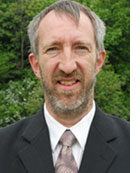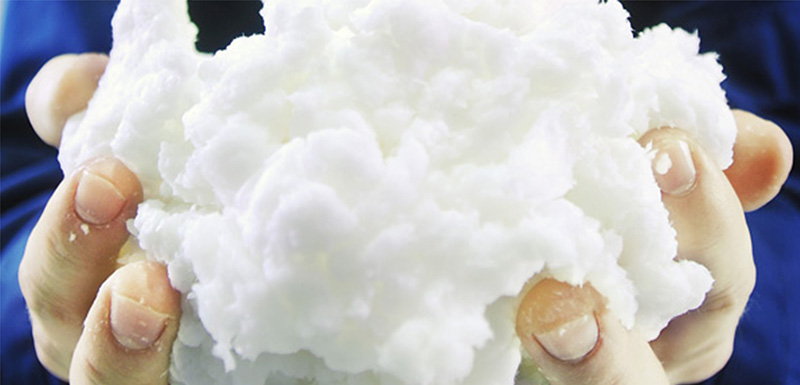Cake batter can be easily mixed with a wooden spoon, but bread dough, with its higher solids content, requires a lot more energy to be properly mixed. Similarly, wood pulp becomes more difficult to mix with bleach liquor as the solids content increases, requiring higher mixing energy.
It’s well known that chemical reactions proceed faster when the concentration of reagents is higher. Because of this, the efficiency of peroxide bleaching of mechanical pulps improves as the pulp consistency is raised, but only if it is well mixed. In the mid-1980s, most mills were bleaching at medium consistency (8–15%) using mixing equipment that was designed for a maximum of about 15% consistency. New presses were being developed that could squeeze enough water out to reach 35% consistency, but at that time there was no suitable equipment to mix at that high a consistency.
In peroxide bleaching, it’s important to first remove metal ions that come in with the pulp, especially manganese, iron and copper, which rapidly decompose hydrogen peroxide. For this reason, a chelating agent such as DTPA (diethylenetriamine pentaacetic acid) is added to the pulp in the latency chest, which grabs onto the metal ions. When the pulp is subsequently thickened, the chelated metals are washed out.
About thirty years ago, I was involved in evaluating various pieces of mixing equipment for bleaching at up to 30% consistency. Double-shafted paddle mixers designed for medium consistency did a poor job of mixing. Several different types of industrial high-shear mixer (many coming from the food industry) did a better job, and it was found that, up to a certain point, the efficiency of mixing improved with the amount of energy input. In a high-shear mixer, some of this energy goes into heating the pulp. Both peroxide bleaching and peroxide decomposition proceed faster at a higher temperature and a higher pH, but bleaching consumes alkali while decomposition does not. Therefore, the faster the bleaching proceeds, more of the peroxide is used for bleaching than for decomposition.
There was one other adjustment needed to get high consistency peroxide bleaching to work well. The conventional method at medium consistency was to make up a dilute bleach liquor (1–4% H2O2) containing all the ingredients (peroxide, caustic and sodium silicate to stabilize the peroxide), store that liquor in a tank and then pump it to the mixer. At high consistency, however, the extra water in that bleach liquor could reduce the final consistency by as much as 5% (e.g., from 30% to 25%), decreasing the bleaching efficiency by lowering the effective peroxide concentration. We decided to try adding the ingredients as received (peroxide and caustic at 50% concentration and sodium silicate slurry) separately and directly to the mixing zone. As long as there was instant high-energy mixing, it didn’t seem to matter in what order the ingredients were added, but as a precautionary principle, the caustic was added last, since caustic without peroxide can darken the pulp.
Today almost all producers of high-brightness mechanical pulps, including producers of BCTMP and high-brightness paper incorporating mechanical pulps, use these methods for peroxide bleaching. Thanks to high-shear mixing, efficient peroxide bleaching of mechanical pulp is now a piece of cake!
 Martin Fairbank, Ph.D. Martin Fairbank has worked in the forest products industry for 31 years,
Martin Fairbank, Ph.D. Martin Fairbank has worked in the forest products industry for 31 years,
including many years for a pulp and paper producer and two years with
Natural Resources Canada. With a Ph.D. in chemistry and experience in
process improvement, product development, energy management and lean
manufacturing, Martin currently works as an independent consultant,
based in Montreal. He is also an author, having recently published
Resolute Roots, a history of Resolute Forest Products and its
predecessors over the last 200 years.
Martin Fairbank Consulting
Industry Experience
- Pulp and Paper Technology
- Materials Recycling
- Biorefinery Development
- Manufacturing
- Government Subsidy Programs
Services
- Technical Writing
. White Papers
. Grant Applications
. Explain technical concepts - Scientific Editing
. Review of articles for publication - Project Assessment
. Evaluation of Technologies
. Project evaluation for funding agencies - Pulp & Paper
. Conventional and emerging technologies
